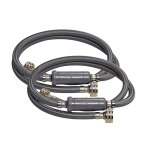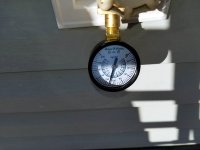ArlyA
Super Star Member
- Joined
- Mar 18, 2016
- Messages
- 13,487
- Tractor
- Outlander1000 6x6, Ego lawn mower and shopping for tractor
Home built, water column arrestors do not work. That's a tube with a cap, that some air remains as a buffer to the hammering effect. The reason they don't work is because water absorbs the air in the column, in a rather short amount of time. The reason we should have hammer arrestors installed near all our electric valved appliances is for the health of your water system. The cycling or pressure shock, these appliances add to our system can be much. Adding these is much easier than finding blow pipes after you get home.
Close the washing Machine water inlets. If that stops the water hammer you got a place for arrestors.
The home built arrestors may result in stagnant water and do not meet code.



